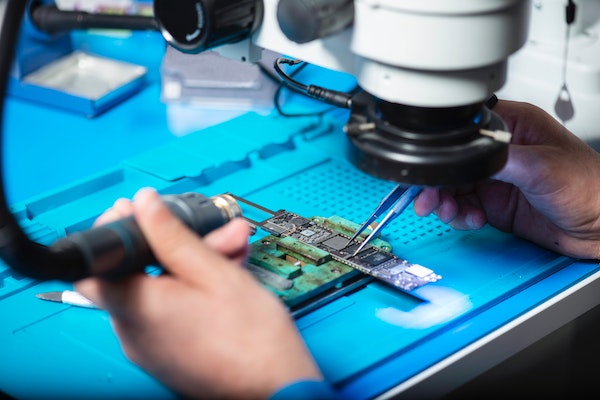
Surface-mount technology (SMT) has revolutionized the electronics industry. By allowing components to be soldered directly to the surface of a printed circuit board (PCB), SMT has enabled the production of smaller, more reliable, and more efficient electronic devices. But what happens when you need to remove an SMD component from a PCB? That’s where desoldering comes in. Desoldering SMD components is a delicate process that requires skill and precision.

In this guide, we’ll explain the basics of desoldering SMD components, from the tools you’ll need to the techniques you’ll use. We’ll also provide some tips and tricks to help you get the job done quickly and safely.
Before you can begin desoldering SMD components, you’ll need to gather the right tools. The most important tool is a desoldering station. This device heats up a metal tip, which is then used to melt the solder and release the component. You’ll also need a soldering iron, solder wick, and a vacuum pump.
In addition to the tools, you’ll need the right materials. Make sure you have plenty of flux, solder, and solder paste on hand. Flux helps the solder flow smoothly and prevents oxidation. Solder paste is a combination of solder and flux that can be used to reattach components after they’ve been removed.
Once you have the right tools and materials, you can begin the desoldering process. The most common technique is to use a desoldering station to heat up the solder and release the component. This is a slow and delicate process, so it’s important to take your time and be careful.
Another technique is to use a soldering iron and solder wick. This method requires you to heat up the solder and then use the wick to absorb the molten solder and release the component. This technique is faster than the desoldering station, but it can be tricky to get the wick in the right place.
Finally, you can use a vacuum pump to remove the solder and release the component. This method is the fastest, but it can be difficult to get the pump in the right place and it can damage the component if you’re not careful.
Desoldering SMD components can be tricky, so here are a few tips and tricks to help you get the job done quickly and safely.
• Always wear eye protection when desoldering.
• Use flux to help the solder flow smoothly.
• Be sure to use the right temperature for the job. Too hot and you’ll damage the component; too cold and the solder won’t flow.
• Use solder paste to reattach components after they’ve been removed.
• If you’re using a vacuum pump, be sure to use the right size nozzle for the job.
• Take your time and be careful. Desoldering is a delicate process and it’s easy to damage components if you rush.
Desoldering SMD components is a delicate process that requires skill and precision. In this guide, we’ve explained the basics of desoldering SMD components, from the tools and materials you’ll need to the techniques you’ll use. We’ve also provided some tips and tricks to help you get the job done quickly and safely. With the right tools and techniques, you can master the art of desoldering SMD components.
AiXun is a leading supplier of soldering and desoldering tools in China. Products are designed to meet the highest standards of quality and reliability. AiXun provides a wide range of intelligent tools, including soldering irons, desoldering station, flux, soldering tips etc., and the products are durable and reliable. We strive to provide our customers with the highest quality products at the most competitive prices. A team of experts are on hand to answer any questions you may have and provide guidance on the best soldering tools for your needs.
 WhatsApp
WhatsApp